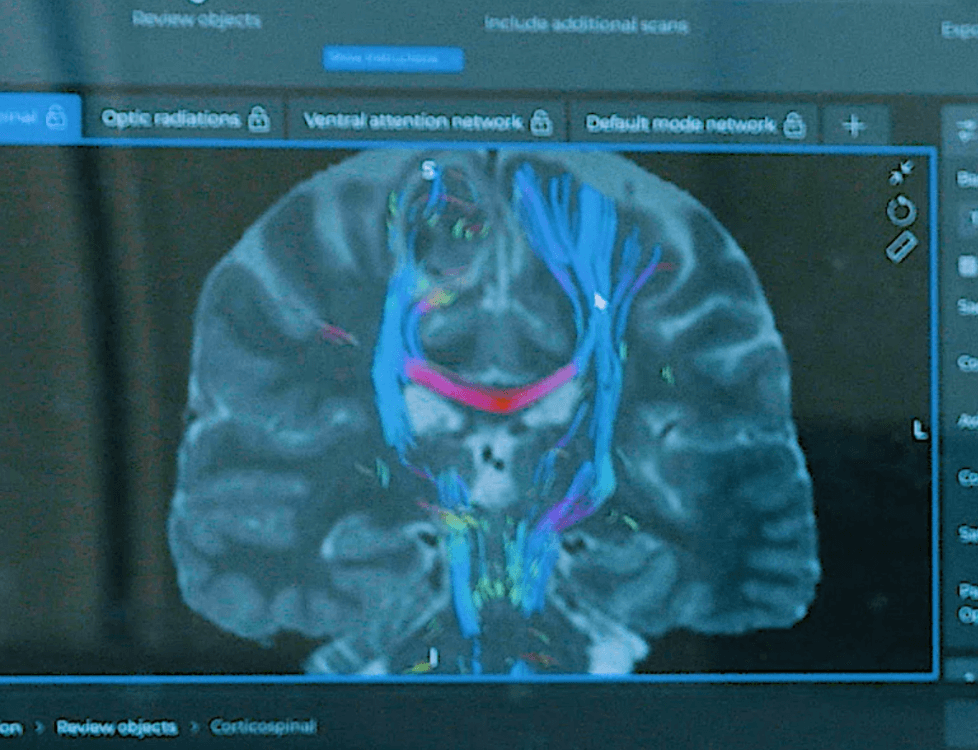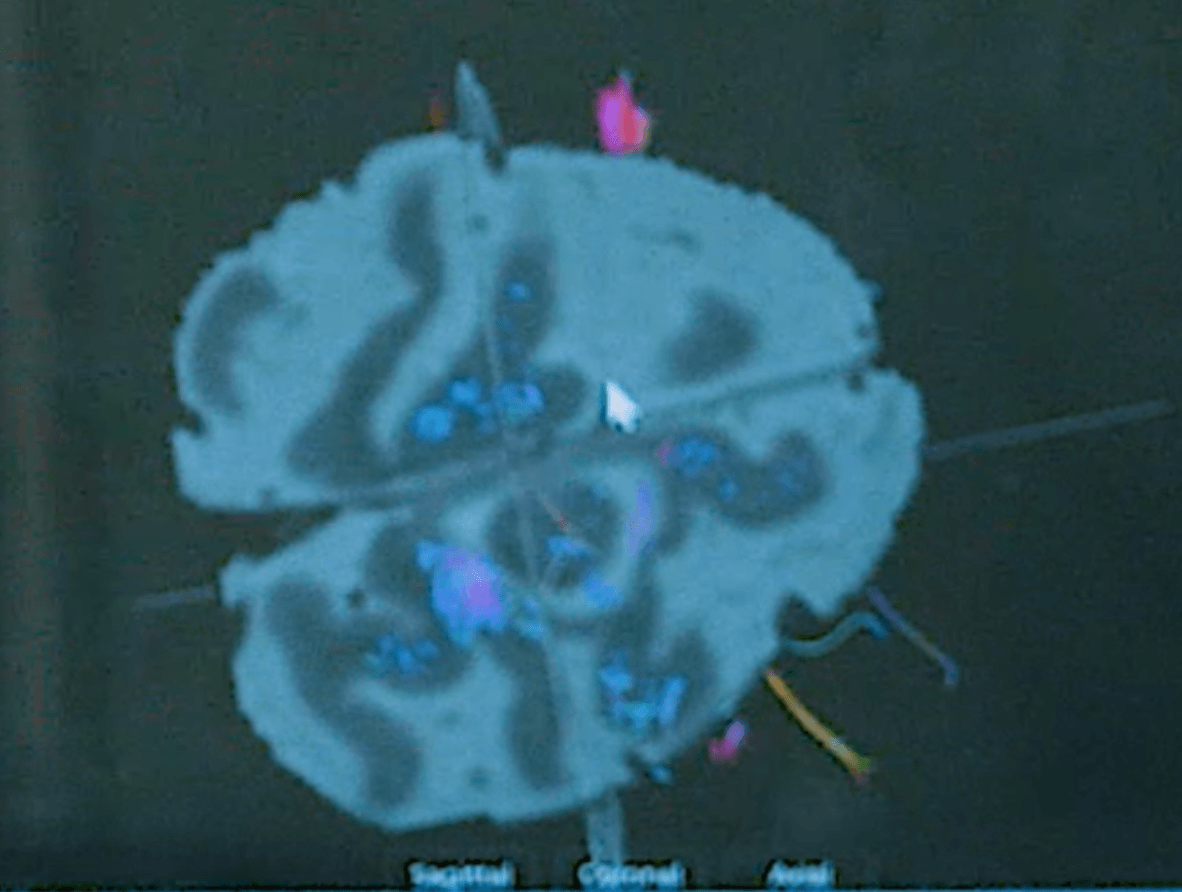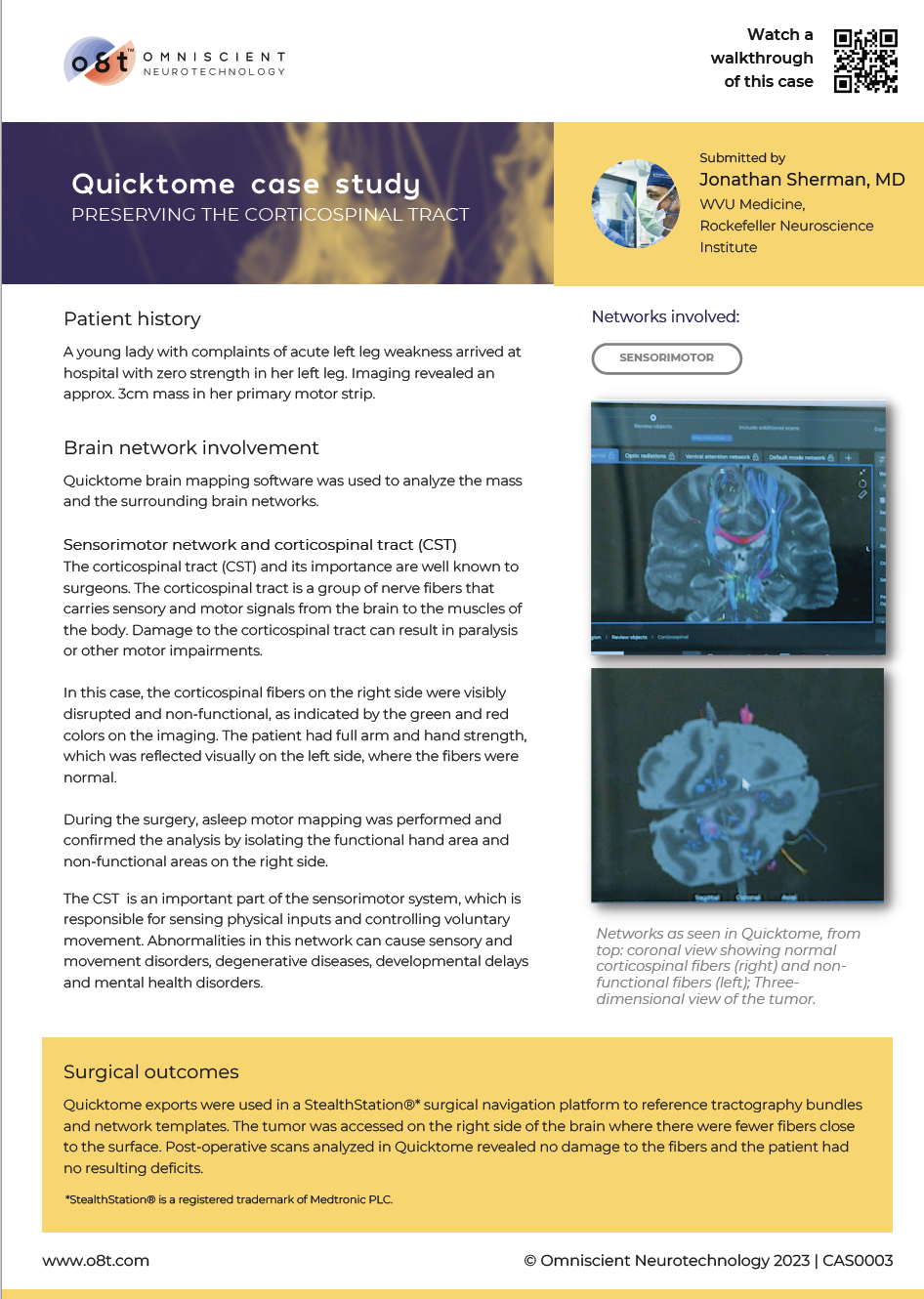Sensorimotor network and corticospinal tract (CST)
The corticospinal tract (CST) and its importance are well known to surgeons. The corticospinal tract is a group of nerve fibers that carries sensory and motor signals from the brain to the muscles of the body. Damage to the corticospinal tract can result in paralysis or other motor impairments.
In this case, the corticospinal fibers on the right side were visibly disrupted and non-functional, as indicated by the green and red colors on the imaging. The patient had full arm and hand strength, which was reflected visually on the left side, where the fibers were normal.
During the surgery, asleep motor mapping was performed and confirmed the analysis by isolating the functional hand area and non-functional areas on the right side.
The CST is an important part of the sensorimotor system, which is responsible for sensing physical inputs and controlling voluntary movement. Abnormalities in this network can cause sensory and movement disorders, degenerative diseases, developmental delays and mental health disorders.






